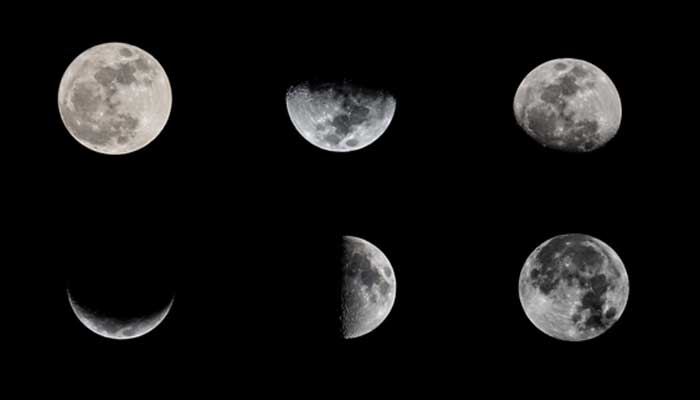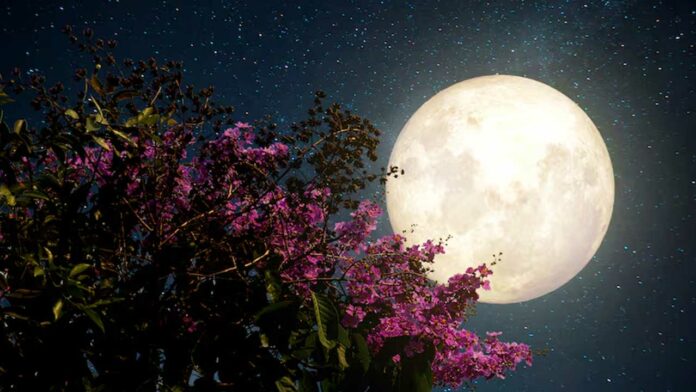The Moon: A Celestial Beauty
The Allure of the Moon
As the Earth’s only natural satellite, the Moon is beautiful isnt it and holds a special place in the hearts and minds of people across the globe. Its gentle orbit around our planet creates a mesmerizing dance in the night sky, captivating observers with its ever-changing phases and luminous glow. Whether full and radiant or merely a slender crescent, the moon never fails to inspire wonder and admiration.
Historical Significance
Since ancient times, civilizations have looked to the moon with reverence and awe. From the lunar deities of Mesopotamia to the moon festivals of East Asia, the moon has played a central role in cultural and religious practices around the world. Its influence can be seen in mythologies, folklore, and ancient calendars, reflecting humanity’s deep connection to the celestial realm.
The Science Behind its Beauty
Beyond its aesthetic appeal, the moon’s beauty is rooted in scientific phenomena that have fascinated astronomers for centuries. From its reflective surface to the ever-changing phases, the moon’s appearance is shaped by a myriad of natural processes and cosmic forces.
Reflective Surface
One of the most striking features of the moon is its luminous surface, which reflects sunlight back to Earth, illuminating the night sky. The moon’s surface is covered in craters, mountains, and plains, created by impacts from asteroids and comets over billions of years. These features create intricate patterns of light and shadow, adding to the moon’s captivating allure.
Phases of the Moon

The moon undergoes a series of phases as it orbits the Earth, transitioning from new moon to full moon and back again. These phases are the result of the moon’s position relative to the Earth and the Sun, creating different angles of illumination that give rise to the familiar cycle of waxing and waning. Each phase has its own unique beauty, from the delicate crescent of the new moon to the brilliant radiance of the full moon.
Cultural Significance
Beyond its scientific marvels, the moon holds profound cultural significance as a symbol of beauty, mystery, and transcendence. Across diverse cultures and civilizations, the moon has been celebrated in art, literature, and mythology, serving as a source of inspiration and wonder.
Moon in Literature and Art
Throughout history, poets, painters, and writers have drawn inspiration from the moon’s luminous beauty, capturing its essence in their works of art and literature. From Shakespeare’s sonnets to Van Gogh’s starry nights, the moon has been the muse for countless masterpieces, evoking the magic and majesty of the celestial realm.
Moon Myths and Legends
In addition to its artistic allure, the moon has inspired a wealth of myths, legends, and folktales that reflect humanity’s fascination with the night sky. From tales of lunar deities and moon goddesses to stories of werewolves and lunar eclipses, the moon has been woven into the fabric of cultural lore, symbolizing everything from love and fertility to madness and mystery.
Moon Gazing: A Therapeutic Ritual
In our fast-paced world, moon gazing offers a rare opportunity to slow down, connect with nature, and find solace in the beauty of the night sky. Whether alone or with loved ones, taking time to gaze at the moon can be a deeply therapeutic experience, offering moments of peace, reflection, and awe.
The Calming Effect
Additionally, there is something inherently calming and soothing about gazing at the moon. Its serene presence has a way of quieting the mind and easing the stresses of daily life. Furthermore, this allows us to feel more grounded and centered in the present moment. Whether meditating under the full moon or simply taking a quiet walk beneath its glow, moon gazing can provide a much-needed respite from the chaos of the world.
Moon Gazing Tips
Firstly, for those looking to enhance their moon gazing experience, there are a few simple tips to keep in mind. Secondly, find a comfortable spot with a clear view of the sky, away from city lights and distractions. Additionally, bring a blanket or lawn chair for added comfort, and consider using binoculars or a telescope to get a closer look at the moon’s surface and craters. Most importantly, allow yourself to fully immerse in the experience, letting go of worries and distractions as you bask in the beauty of the night sky. Remember, “The Moon is Beautiful Isn’t It?”
The Moon’s Impact on Earth
The Moon is beautiful isnt it? Beyond its aesthetic appeal and cultural significance, it plays a vital role in shaping the Earth’s environment and ecosystems. From influencing tides to regulating climate patterns, the moon’s gravitational pull has a profound impact on life on our planet.
Tides and Lunar Cycles
One of the most well-known effects of the moon is its influence on Earth’s tides. The gravitational pull of the moon causes the oceans to bulge outward, creating high and low tides that ebb and flow with the lunar cycle. These tidal fluctuations play a crucial role in shaping coastal landscapes, marine ecosystems, and even the behavior of marine animals.
Ecological Impact
In addition to its effects on the oceans, the moon also influences terrestrial ecosystems in subtle yet significant ways. Lunar cycles can affect plant growth, animal behavior, and even human physiology, with studies suggesting links between the moon and phenomena such as fertility, sleep patterns, and mood fluctuations. As our understanding of these relationships grows, so too does our appreciation for the interconnectedness of life on Earth.
Moon Exploration and Discoveries
Throughout history, humanity has been drawn to the moon, embarking on missions of exploration and discovery to unravel its mysteries and unlock its secrets. From the first human footsteps on the lunar surface to the latest scientific discoveries, moon exploration has expanded our understanding of the cosmos and inspired generations of dreamers and innovators.
Human Missions to the Moon
The Apollo missions of the 1960s and ’70s marked the pinnacle of human achievement in space exploration, culminating in the historic landing of Apollo 11 and Neil Armstrong’s famous words, “That’s one small step for man, one giant leap for mankind. The moon is beautiful, isnt it? Since then, numerous countries and space agencies have launched missions to the moon, conducting experiments, collecting samples, and paving the way for future exploration.
Scientific Discoveries
Furthermore, the Moon is beautiful isnt it? Moon exploration has opened up new possibilities for future space missions. Additionally, the study of the moon’s origins and geological history has provided scientists with valuable information. Moreover, the potential use of the moon as a resource for future space missions is an exciting prospect. This ongoing research continues to deepen our understanding and appreciation of the moon.
The Future of Moon Exploration
As we look to the future, the moon remains a focal point of exploration and discovery, with ambitious plans for lunar colonization, scientific research, and space tourism on the horizon. From moon bases and habitats to lunar rovers and mining operations, humanity’s vision for the moon is limited only by our imagination and ingenuity.
Plans for Lunar Colonization
In recent years, there has been growing interest in the prospect of establishing permanent human settlements on the moon, leveraging its resources and proximity to Earth to support future space missions and scientific endeavors. The Moon is beautiful isnt it? NASA’s Artemis program aims to return astronauts to the lunar surface by the mid-2020s, laying the groundwork for sustainable lunar exploration and eventual colonization.
Space Tourism
In addition to scientific research and exploration, the Moon is beautiful isnt it—and it holds immense potential as a destination for space tourism, offering travelers the opportunity to experience the beauty and wonder of the lunar landscape firsthand. Companies like SpaceX and Blue Origin are already developing plans for commercial lunar missions, paving the way for a new era of space travel and adventure.
Conclusion
In conclusion, the Moon is beautiful isnt it? Its beauty and significance transcend time, culture, and scientific understanding. From its mesmerizing presence in the night sky to its profound influence on Earth and humanity, the moon continues to inspire wonder, curiosity, and exploration. Whether gazing at the full moon from the comfort of our backyard or dreaming of lunar colonies and space tourism, the moon reminds us of the boundless possibilities that lie beyond the stars. It serves as a timeless symbol of human imagination and ambition, inviting us to reach for the stars and explore the unknown.
Unique FAQs
-
Why does the moon appear larger on the horizon?
The moon illusion, which makes the moon appear larger when it’s near the horizon, is still not fully understood. It’s believed to be a trick of the mind rather than an actual change in size.
2. Can you see the moon during the day?
Yes, the Moon is beautiful isnt it—and it’s often visible during the day, especially when it’s in its waxing or waning phases. However, it may not be as noticeable against the bright backdrop of the sky.
3. What causes a lunar eclipse?
A lunar eclipse occurs when the Earth passes between the sun and the moon, casting a shadow that partially or completely obscures the moon’s surface. This phenomenon can only happen during a full moon.
4. Are there any plans to mine resources from the moon?
Yes, there are ongoing discussions and research regarding the feasibility of mining resources such as water ice and rare minerals from the moon to support future space missions and colonization efforts.
5. How long does it take to travel to the moon?
The journey to the moon typically takes around three days using current spacecraft technology, although this may vary depending on the specific mission and trajectory.

